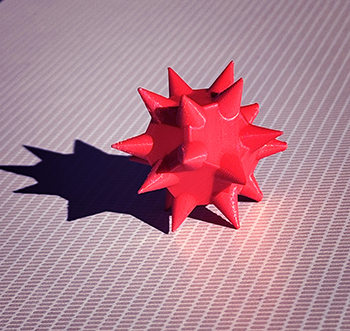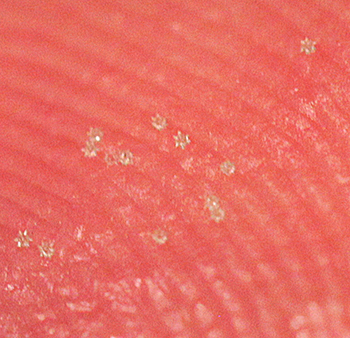New needle technology makes skin cream and dermatology more effective

A student at KTH Royal Institute of Technology has worked to further develop and validate the use of advanced microsphere technology during their thesis project at Stanford. These microspheres, which resemble tiny spikes on a microscopic sphere, were developed by researchers at KTH. The aim of the technology is to improve the penetration of drugs and skin creams, potentially allowing ingredients in cosmetics and medicines to penetrate the skin up to 100 times more effectively.
Master’s student William Ferreira Andrén has been working with the microsphere technology, called "rolling spiked microspheres." In his thesis project for the Medical Biotechnology programme, he validated its use in skincare, showing that a standard moisturizing cream can become twice as effective when applied using microspheres.

The technology was developed by Niclas Roxhed, a university lecturer and a pioneer in microneedle technology at KTH, and KTH doctoral candidate Theocharis Nikiforos Iordanidis, an expert in micro-manufacturing.
Skincare products fall short
Ferreira Andrén has expanded and explored several different uses for the microsphere technology, including how it can enhance the penetration of skincare products.
"Most skincare products don’t work as promised," Ferreira Andrén says. "In fact, only 1 to 5 percent of the active ingredients in traditional creams penetrate the outermost skin barrier, the stratum corneum. This means billions are spent on skincare products that don’t reach the deeper layers of the skin where they are most needed," Ferreira Andrén says.
A hot topic in Silicon Valley
The needle technology has applications beyond cosmetics. Medicines could also be delivered using this method, aligning with the concept of "Longevity," which the technology is also designed to support.
"Longevity aims to improve human lifespan and health through new treatment methods, in our case, within dermatology. Our technology can be used to deliver mRNA, exosomes, or other molecules that rejuvenate the skin, not just cosmetically," Ferreira Andrén explains. "It’s a fast-growing field, especially in Silicon Valley, where there’s significant interest in using these microspheres," Ferreira Andrén says.

5,000 tiny holes in 10 seconds flat
The microspheres create temporary channels in the skin, allowing creams or medicines to penetrate more deeply. As the cream is applied, the spiked design of the spheres helps them roll over the skin’s surface, creating up to 200 tiny holes per sphere within 10 seconds.
"Twenty-five microspheres can create 5,000 tiny holes in the same amount of time," Ferreira Andrén says.
He adds that previous experimental results from Roxhed’s research group have demonstrated that this needle technology can make creams up to 100 times more effective. The platform has been tested in model systems for human skin.
Medicine to follow later
Ferreira Andrén’s work paves the way for clinical trials. The positive results in model systems and now human skin are an important step toward moving on to clinical studies. The next phase is to confirm safety and effectiveness in studies for cosmetic use, with clinical trials for medical applications to follow later.
"The goal is to first launch products in the cosmetics sector because it’s the quickest route to market, followed by longevity and then pharmaceutical applications. We aim to have our first product on the market within the cosmetics sector by 2025," Ferreira Andrén says.
Text: Peter Asplund
